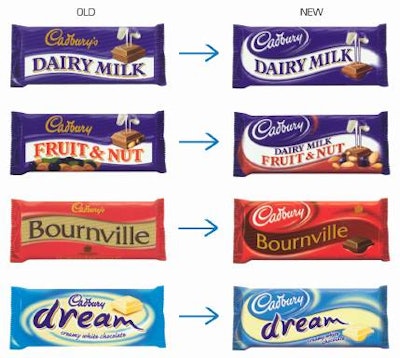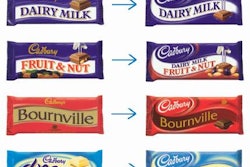
“New look!”
These words should strike fear in any marketer’s heart. Putting a bright “new look!” burst on your package can be a way of drawing attention to an on-target redesign that creates interest and excitement on the shelf. However, it is often a way to either reassure your consumers that they are indeed holding the same product or worse, it’s a way to draw their attention in case they miss the new look altogether.
Of course, there are many valid reasons and many occasions when you will want to depart substantially from a dated-looking package. However, the brand must have valuable equity with some consumer segments, or you would simply start from scratch, with a new positioning and new name to go with the new look. The trick is recognizing which parts of the visual equity are valuable and those parts that should be discarded.
Define your visual equities
We all know that consumers don’t read packaging; they recognize it. Therefore, many categories are aligned by color, logo shape, and structural design (Which cola package is red? Which one is blue?). In redesigning packaging for existing brands, brand owners often say they must stay fairly close to the current logo, colors, or package configuration so consumers still will be able to find their brand. Of course, this thinking is absolutely correct, up to a point.
It is imperative to understand the visual equities of your brand. They form the bedrock of the visual communication and must be changed over time. Understand what can be changed and how. It is possible to update a logo font and holding device while maintaining the colors, and consumers may not identify the specifics of the change consciously but will feel that the product is somehow new and improved. This is akin to seeing a colleague who looks great after the weekend and asking them, “Is that a new shirt?” when in fact they may have gotten a haircut.
Design for the future
By the time a new package design hits store shelves, a year or longer may have passed since marketers wrote the design brief and designers sketched initial concepts. If the team focuses on the category as it is at the start of the project, it risks launching a new design that will rapidly become out of date. Keep an eye on trends in your category and others, as well as overall trends involving your target consumers. Design for where they will be, not where they are now.
Trust your agency
Once the visual equities have been established and trends for the future have been identified, it’s time to begin design in earnest. This is the time when it’s critical to work with an agency in which you have confidence, and trust them to balance all the considerations and develop designs that solve problems in different but equally creative ways. Be upfront about constraints, but be open to exploring many possibilities.
We all talk about developing a partnership between clients and agencies; this is the time when it happens. In addition, for creating a true partnership and attaining the most effective results, the agency should be involved from the onset of a project, identifying visual equities and trends with you.
When selecting an agency, focus on in-market results. While agencies should deliver big ideas that challenge category branding conventions, they should also help to deliver measurable results.
For example, Blue Marlin Brand Design identified the visual equities in the Cadbury lineup of chocolates—they are the logo, variant identification ribbon, and a visual of the product inside the package. A redesign staged these components in a consistent hierarchy on the front panel of the package, enabling consumers to easily identify the Cadbury family. Sales of the brand increased 36% in the year after the redesign.
In Europe, Crow & Grate’s infant formula breaks category conventions by illustrating functional and hygienic benefits to consumers through structural design. The package makes formula scooping, leveling, and dispensing manageable with one hand. The leap in functionality increased market share by 6% for this product through loyal shoppers who make repeat purchases.
Bring in fresh thinking
Often, consumer product companies pursue a fresh concept in the early stages of a packaging project, but by the time that designers turn a project around, they appear to have re-created the mechanicals of the client company’s current packaging. It’s only natural, but we must all fight the pull of the familiar, because that’s all it is—familiar.
Brand owners are accustomed to their current packaging and the existing packaging norms in their category. They can find themselves drawn to it against their will. We all subconsciously return to solutions that are tried and true. The only way to combat this tendency is to constantly review the project brief and visual equities established as “must keep” at the beginning of the project, and remain open to change on the rest.
Also, remember that when you started working on your current brand, you thought like a consumer and asked questions that longstanding team members had stopped asking ages ago. Once again, you must tap into that perspective.
Sometimes, the best redesigns are led by marketers who are relatively new to their brands, helped by their recall of the days when they were consumers of the brand. Fresh ideas are also more likely to surface when the branding team includes a diverse mix of members, those steeped in brand history and those with a fresh point of view.
It’s a lot to keep in mind, parsing the visual equities of your brand, predicting where the category will head in a few years, developing a true working partnership between agency and client, and keeping the forces of the familiar at bay. In addition, just as with true love, the course of developing great packaging never does run smoothly. However, by continually sticking to the equities of your brand, you will develop business-building packaging truly worthy of a “new look.”


























